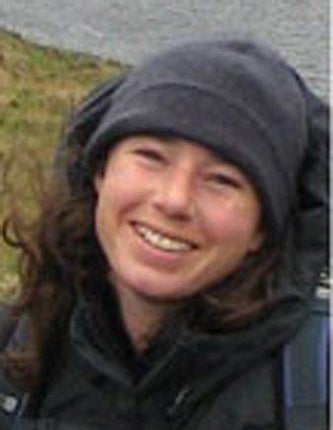The men and women in woolly hats who risk their lives to study volcanoes

The riskiest thing most of us do each day is drive to work. But life for a volcanologist is a little more exciting – especially when their object of study starts to grumble angrily in the hot bowels of the earth.
Scientific field work probably doesn’t get more daring than the moment when volcanologists make the long trek up an active volcano to check their tilt meters and GPS devices.
Most of the time the risks are small – even when toxic gases and molten rocks begin to spew from the ground – but occasionally the men and women who climb volcanoes for a living fail to make the return journey, which has happened more than once over the past 30 years.
This is after all a branch of science that is aptly named after an ancient Roman deity – Vulcan, the god of fire – and volcanologists are acutely aware that they are dealing with one of the most powerful and unpredictable forces of nature.
For volcanologist Kathryn Goodenough of the British Geological Survey in Edinburgh, her “volcanic moment” came when she climbed Ol Doinyo Lengai in Tanzania, which means Mountain of God in the language of the local Maasai. Here the magma is rich in carbonates, rather that silica, which means it is highly fluid and runs like water down the mountain’s steep slopes.
“It was the most exciting time, and really unusual because of the carbonate magma. The shapes and patterns it produced were incredible. I’ve never stood on top of a volcano and thought that this was really dangerous, but I am fully aware of the power of volcanoes,” Dr Goodenough said.
Not everyone studying volcanoes survives to tell the tale. American volcanologist David Johnson died when Mount St Helens erupted violently on 18 May 1980, the first time in 123 years. Dr Johnson was observing the volcano from an observatory on a ridge five miles from the summit and he should have died alongside his fellow researcher from the US Geological Survey, Harry Glicken, who fortunately had been called away that day to attend a meeting about his career.
Dr Glicken, however,was not so lucky when he was caught up in the eruption of Mount Unzen in Japan in June 1991. This eruption also killed French volcanologist Maurice and Katia Krafft, a husband-and-wife team who had pioneered the filming and photography of active volcanoes.
One of the worst episodes in volcanology, however, occurred in January 1993 when six scientists died while working in the crater of the Galeras volcano in Colombia. Among the dead was Geoff Brown, professor of earth sciences at the Open University, who was one of two British delegates to a scientific workshop of volcanologists who were trying to establish a new monitoring programme for the volcano.
In the same university department today, Dave Rothery remembers the time when he too came close to being hurt when he was showered by hot fragments on the slopes of Mount Stromboli in Sicily. “It was exhilarating, but it’s not the sort of situation you want to get into,” Dr Rothery said.
In the case of the eruption of the Eyjafjallajokull volcano in southern Iceland seismic instruments first began to detect the movement of molten magma in this volcano several days ahead of the eruption. As the superheated rock in the volcano’s magma chamber found its way to the surface through fissures in the ground, it began to react explosively with water melting from the volcano’s cap of ice.
Even without the addition of water to the explosive mixture, the effect of releasing pressurised gases in the molten magma would have been like uncorking champagne. The meltwater also created superheated steam which sent plumes of ash loaded with tiny glass shards high into the sky where they were carried across Britain and much of northern Europe.
Eyjafjallajokull is just one of many volcanoes around the world that are routinely monitored by volcanologists. Tilt meters detect ground movements as a magma chamber swells, seismic monitors detect the rumble of molten rock as it shifts from one place to another and satellites overhead watch out for the telltale contortions of the ground.
“We can look at the different gases coming out from a vent to look for changes. You often get swarms of earthquakes and land swell, days and hours leading up to eruptions,” said Dougal Jerram of Durham University.
Most volcanologist have experienced the exhilaration of feeling the force of a volcano first hand. In the case of Dr Jerram it was on the slopes of Mount Colima in Mexico when he was almost
chased by a fast-moving pyroclastic flow. “It was part of the thrill,” he said.
Join our commenting forum
Join thought-provoking conversations, follow other Independent readers and see their replies
Comments